When you walk into a spa for the first time, the idea of a Deep tissue massage is a therapeutic technique that targets deeper layers of muscle and fascia to release chronic tension can feel both exciting and intimidating. Many wonder whether a deep tissue massage is a good fit for a debut session. This guide breaks down the basics, the real‑world benefits, what you’ll feel during the appointment, and safety pointers so you can decide with confidence.
Understanding the Basics of Deep Tissue Massage
Origins and History
Deep tissue massage traces its roots to early 20th‑century orthopedic practices in the United States. Physical therapists began using firm pressure to break up scar tissue for athletes recovering from injuries. Over time, spa professionals adapted the technique for broader wellness purposes, keeping the focus on muscle‑layer work rather than surface relaxation.
Core Principles or Components
The method relies on three core ideas: (1) applying sustained pressure to reach the deeper muscle fibers, (2) using slow strokes to avoid startling the nervous system, and (3) targeting trigger points-hyper‑sensitive knots that can refer pain elsewhere. Therapists often combine myofascial release movements with gentle stretching to improve blood circulation and promote endorphin release.
How It Differs from Related Practices
While it shares the calming environment of a typical spa, deep tissue massage is distinct from Swedish massage, which focuses on lighter, flowing strokes meant primarily for relaxation. Below is a quick side‑by‑side view.
| Practice | Key Feature | Primary Benefit |
|---|---|---|
| Deep tissue massage | Firm, slow pressure on muscle & fascia | Relief of chronic pain & tightness |
| Swedish massage | Light, rhythmic strokes | Stress reduction & overall relaxation |
Who Can Benefit from Deep Tissue Massage?
Anyone dealing with persistent muscle soreness, limited range of motion, or sports‑related fatigue can find value. It’s also popular among office workers who experience neck and shoulder tension from long hours at a desk. However, people with certain medical conditions-like severe osteoporosis or acute injuries-should consult a healthcare professional first.
Benefits of Deep Tissue Massage for Body and Mind
Pain Relief
Research from the National Institutes of Health indicates that deep pressure can decrease the perception of pain by stimulating mechanoreceptors, which in turn modulate pain signals in the spinal cord. Clients often report reduced back, shoulder, and hip discomfort after a single session.
Improved Mobility
By loosening tight muscle bands, the massage promotes better joint articulation. Athletes regularly schedule deep tissue sessions to maintain flexibility, especially after heavy training cycles.
Stress Reduction
The intense pressure triggers the release of endorphins and reduces cortisol levels, giving a calming effect that lasts for hours. Even though the session can feel intense, many leave feeling unusually relaxed.
Enhanced Recovery
Improved blood flow delivers oxygen and nutrients more efficiently, which speeds up recovery from micro‑tears caused by exercise. Below is a snapshot of the main advantages.
| Benefit | Description | Impact |
|---|---|---|
| Pain Relief | Targets trigger points and reduces muscle tension | Immediate reduction in ache, lasting 24‑48 hrs |
| Mobility | Increases range of motion in joints | Better performance in daily activities |
| Stress Reduction | Boosts endorphins, lowers cortisol | Improved mood and sleep quality |
| Recovery | Enhances circulation and nutrient delivery | Faster healing after workouts |
What to Expect When Getting Your First Deep Tissue Massage
Setting or Context
Most spas provide a quiet room with dim lighting, a massage table, and soothing music. You’ll be asked to undress to a level you’re comfortable with and lie under a sheet while the therapist works.
Key Processes or Steps
- Consultation - therapist asks about pain areas, medical history, and pressure preference.
- Warm‑up - light strokes to increase blood flow.
- Deep work - firm pressure applied to targeted zones for 5‑10 minutes each.
- Cool‑down - gentle stretches and lighter strokes to finish.
Customization Options
You can request lighter pressure if the intensity feels too strong, or ask the therapist to focus on specific muscles like the trapezius or glutes. Aromatherapy oils or heat packs are optional add‑ons in many Dubai spas.
Communication and Preparation
Speak up if the pressure becomes painful; therapists are trained to adjust on the fly. Drinking water before and after the session helps flush out metabolic waste released from the muscles.
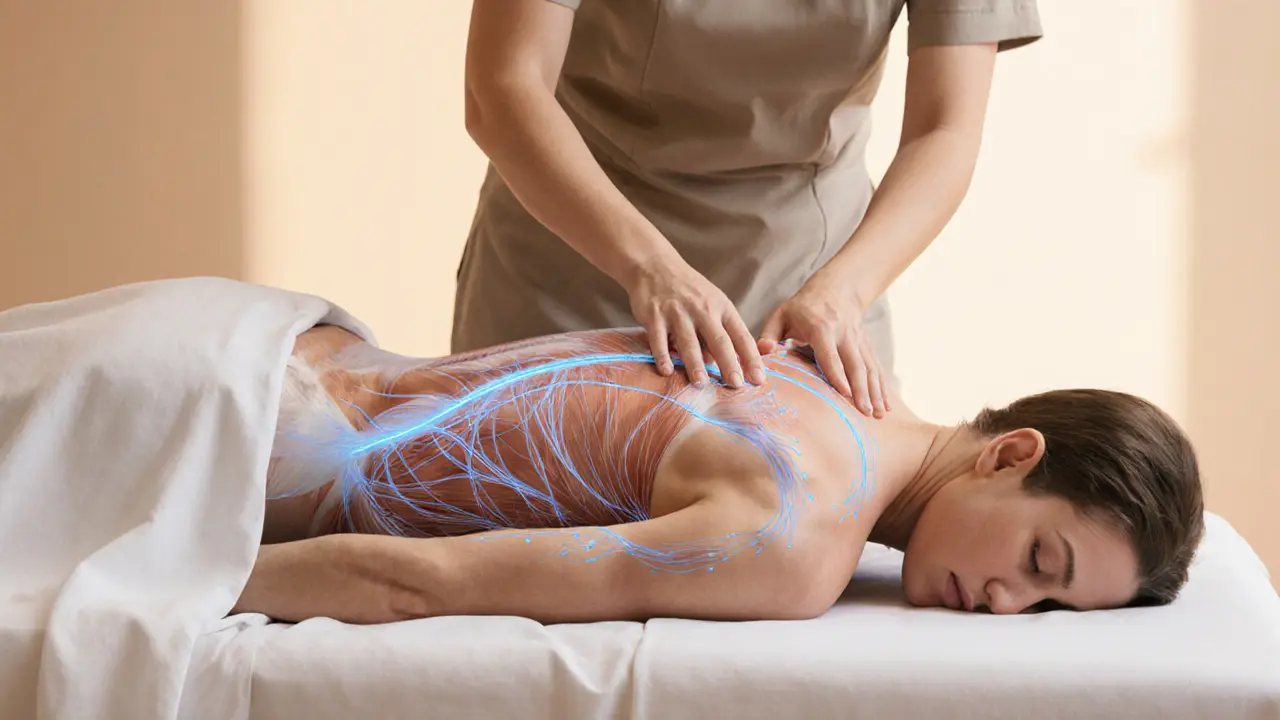
How to Prepare for Your First Deep Tissue Massage
Setting Up for Success
Arrive 10‑15 minutes early to fill out any intake forms. Wear comfortable clothing that’s easy to change out of, and avoid heavy meals right before the appointment.
Choosing the Right Therapist
Look for a licensed practitioner with certification from the American Massage Therapy Association (AMTA) or a similar reputable body. Checking reviews for “deep tissue expertise” can save you a trial‑and‑error round.
Step‑by‑Step Guide
- Research local spas and verify therapist credentials.
- Book a 60‑minute slot labeled “deep tissue” to ensure adequate time.
- Complete the health questionnaire honestly.
- Communicate pressure preferences during the initial chat.
- Relax, breathe deeply, and focus on the sensations.
- After the session, drink water and note any lingering soreness.
Tips for First‑Timers
- Expect some soreness that fades within a day-similar to a good workout.
- Start with a moderate pressure level; you can always ask for more.
- Bring a pair of clean socks if you plan to walk around the spa afterward.
Safety and Ethical Considerations
Choosing Qualified Practitioners
Verified licensing, ongoing education, and a clean professional environment are non‑negotiable. In Dubai, the Department of Health maintains a list of accredited massage centers.
Safety Practices
Good spas follow strict hygiene-clean linens, sanitized tables, and hand washing. Therapists should ask about allergies before using oils.
| Practice | Purpose | Example |
|---|---|---|
| Verify Credentials | Ensure therapist is licensed | Check AMTA certification |
| Hygiene Checks | Prevent infections | Clean linens, disposable covers |
| Allergy Inquiry | Avoid skin reactions | Ask about essential oil sensitivities |
| Clear Communication | Adjust pressure as needed | Use a simple “too hard” signal |
Setting Boundaries
Feel free to request a break or stop the massage at any point. A professional therapist will respect your limits without question.
Contraindications or Risks
People with uncontrolled hypertension, recent fractures, deep vein thrombosis, or active skin infections should avoid deep tissue massage until cleared by a doctor. Pregnant individuals can still benefit, but only with modified pressure and positioning.
Enhancing Your Experience
Adding Complementary Practices
Pairing the massage with a short meditation or light stretching session can amplify the relaxation response. Some spas also offer hydrotherapy tubs that warm the muscles before the deep work begins.
Solo vs. Partner Sessions
While deep tissue is usually performed by a trained therapist, self‑myofascial release tools (like foam rollers) let you maintain flexibility between appointments. Use them gently to avoid over‑pressuring the tissue.
Using Tools or Props
Heat packs, aromatherapy diffusers, and soft bolsters can make the environment more comfortable. Ask the therapist whether these add‑ons are suitable for your skin type.
Regular Engagement for Benefits
Consistency is key. A monthly deep tissue session can keep chronic tension at bay, while a quarterly schedule works for most recreational athletes.

Finding Resources or Experts
Researching Qualified Professionals
Start with the Dubai Health Authority’s directory, then read client testimonials focusing on “deep tissue” results. Verify that the therapist maintains a current CPR certification.
Online Guides and Communities
Websites like the American Massage Therapy Association blog and Reddit’s r/massage community share tips, therapist recommendations, and personal stories that can help you choose wisely.
Legal or Cultural Considerations
In the UAE, public modesty standards require appropriate draping. Ensure the spa follows local regulations and respects cultural norms regarding gender‑matched therapists when preferred.
Resources for Continued Learning
Books such as “The Anatomy of Massage” by Susan G. Salvo and video series from reputable massage schools provide deeper insight into technique and anatomy.
FAQ: Common Questions About Deep Tissue Massage
What should I expect during my first deep tissue massage?
You’ll start with a brief health questionnaire, followed by a light warm‑up, then the therapist will apply firm, slow strokes to the areas you identified. The session usually ends with gentle stretches and a cool‑down period.
Is deep tissue massage painful?
It can feel uncomfortable, especially when pressure hits a tight knot, but it should never be excruciating. Communicating your comfort level lets the therapist adjust the force in real time.
How does deep tissue differ from Swedish massage?
Swedish massage uses light, rhythmic strokes aimed at relaxation, while deep tissue targets the deeper muscle layers to relieve chronic pain and improve mobility. The pressure in deep tissue is significantly higher.
Can I get a deep tissue massage if I’m pregnant?
Yes, but you’ll need a therapist experienced with prenatal adaptations. Pressure is usually reduced, and certain positions are avoided to keep both mother and baby comfortable.
Is a deep tissue massage suitable for beginners?
Absolutely, as long as you communicate your comfort level. Starting with a moderate pressure setting lets your body adapt, and most therapists will tailor the session for first‑timers.
Conclusion: Why Deep Tissue Massage Is Worth Exploring
Deep tissue massage offers a practical route to easing chronic muscle tension, boosting mobility, and calming the mind-benefits that resonate whether you’re an athlete, office worker, or anyone sitting at a desk all day. By following the preparation steps, choosing a qualified therapist, and listening to your body, you can turn a first‑time experience into a valuable wellness habit.
A Path to Better Health
Regular sessions can become a cornerstone of a balanced self‑care routine, helping you move more freely and feel less stressed.
Try It Mindfully
Book a reputable spa, discuss your goals, and let the therapist guide you through the process. If you feel any doubt, a quick consultation with a medical professional can clear it up.
Share Your Journey
Have you tried a deep tissue massage? Drop a comment below or follow our blog for more practical wellness tips. Your story might help someone else take the first step.
Disclaimer: Some links may be affiliate links, but all recommendations are based on research and quality.


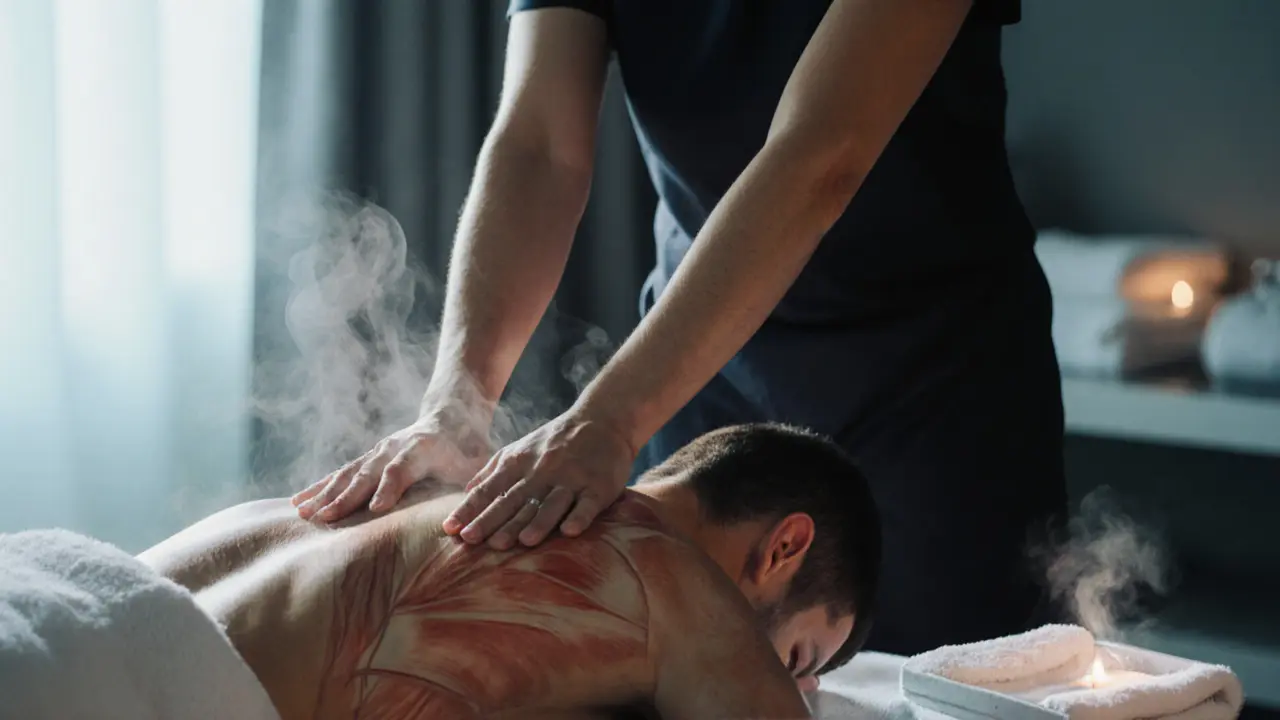


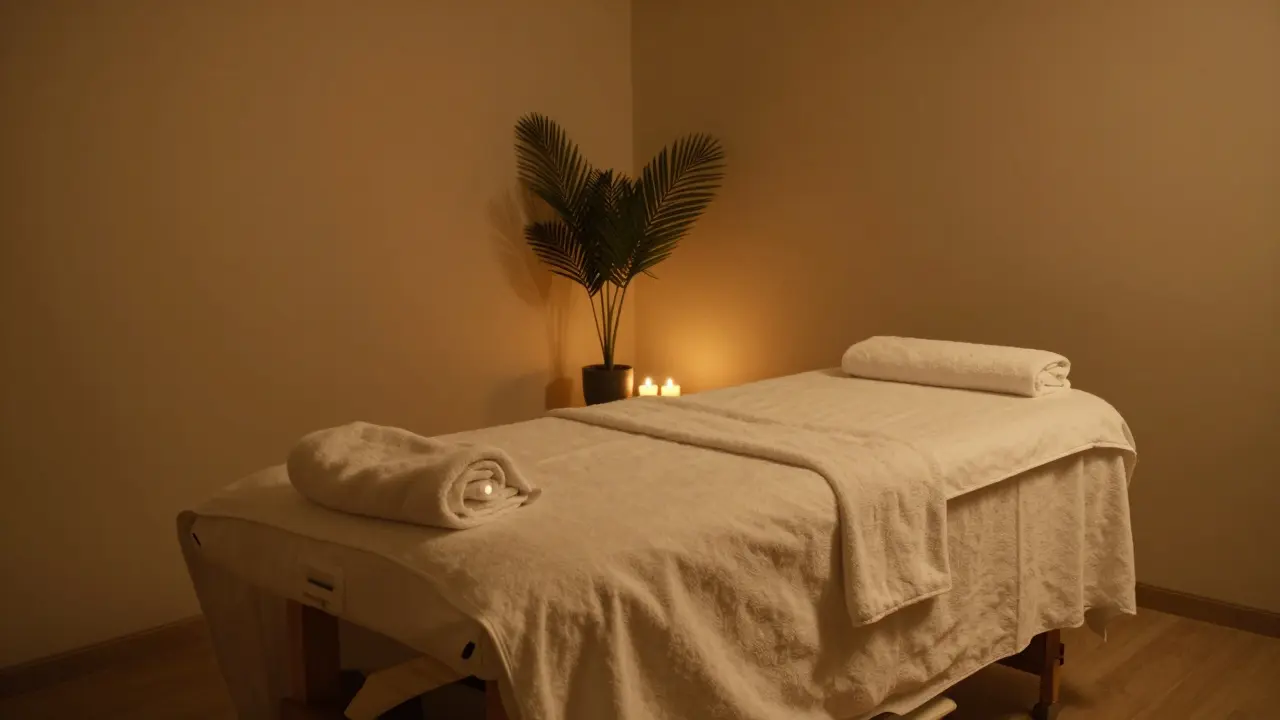
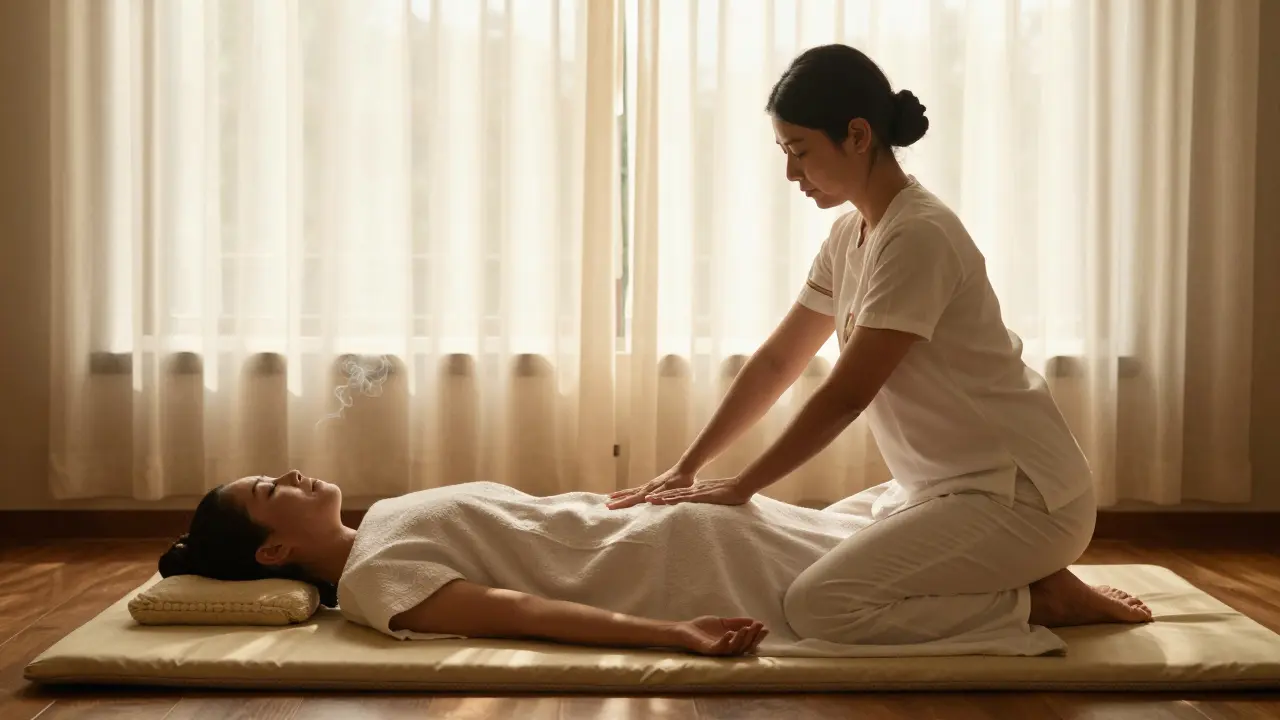
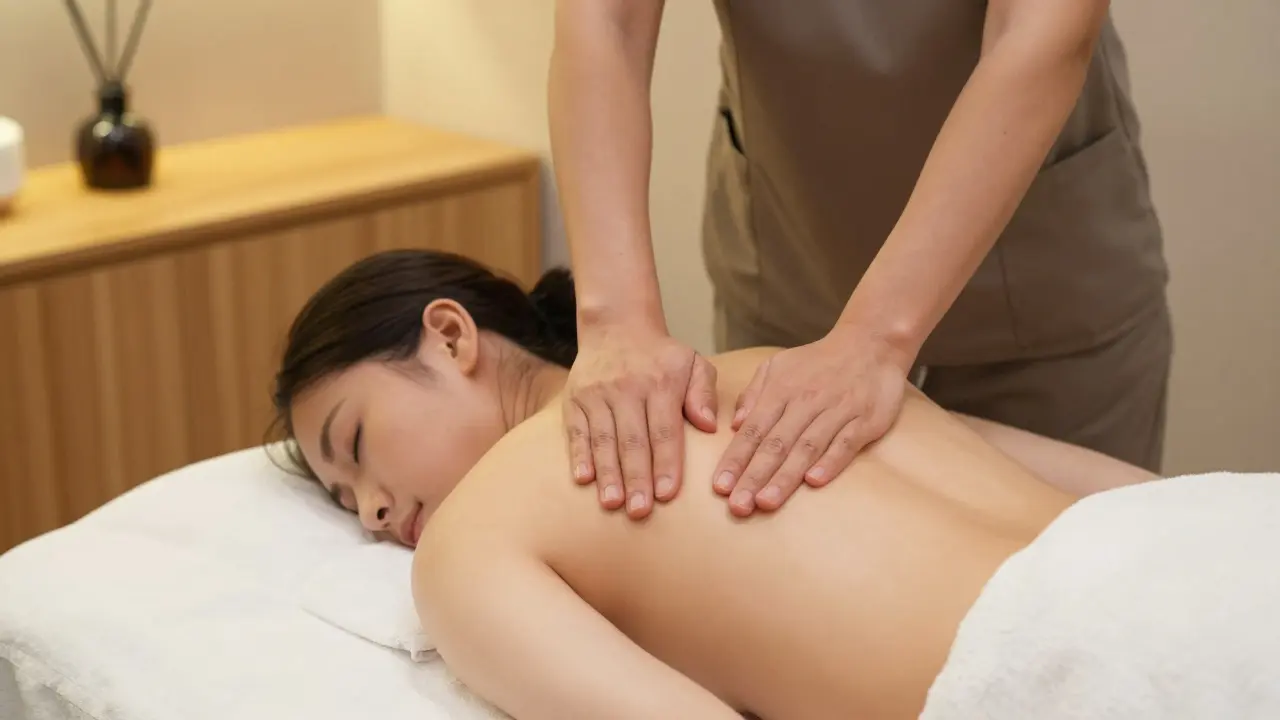

Joe Brown
October 19, 2025 AT 15:33If you're a first‑timer, the most important thing is to communicate your pressure preferences right from the start. A quick chat during the intake lets the therapist tailor the session to your comfort zone. Hydrating before and after the massage helps flush out the metabolic waste that’s released from the muscles. Expect a brief warm‑up with lighter strokes before the therapist moves into the deeper work. This progression not only prevents sudden shock to the nervous system but also enhances blood flow to the targeted areas.
Heather Conover
October 21, 2025 AT 09:13The guide's emphasis on credential verification betrays a superficial understanding of professional standards.
Lisa Sanders
October 23, 2025 AT 02:53America’s best therapists demand respect-so book a US‑based spa, support local businesses, and never settle for an overseas chain!!! The patriotism of choosing a home‑grown practitioner adds an extra layer of pride to your wellness journey!!!
Suresh Suresh
October 25, 2025 AT 10:26Deep tissue can be helpful if you move slowly and breathe. It loosens tight muscles and improves circulation. Talk to the therapist if anything hurts. Simple communication makes the experience better.
varun kamat
October 27, 2025 AT 11:26Choosing a therapist with proper licensing is a wise step. Look for certifications like AMTA or local equivalents, and read client reviews that mention deep‑tissue expertise. When you arrive, arrive a few minutes early to fill out the intake form without rush. This calm start sets a positive tone for the whole session, and you’ll feel more relaxed once the massage begins.
Joe Marquez
October 29, 2025 AT 10:40Oh great, another article telling you to “drink water” after a massage like it’s a groundbreaking revelation. Because we all forget to hydrate while we’re lying under a sheet, right? And the whole “verify credentials” thing-who would have thought a professional should be qualified? Sure, read the guide, follow the checklist, and you’ll become a massage connoisseur overnight.
Talia Bjornson
October 31, 2025 AT 15:26First-time visitors often feel a mix of excitement and nerves, but the experience can be truly rewarding. Start by setting a clear intention for what you want to achieve-whether it’s pain relief or simply a moment of calm. When you arrive, take a few deep breaths and let go of any lingering stress. The intake form is your chance to share any medical concerns, so be honest and concise. Once you’re on the table, a good therapist will begin with gentle strokes that warm up the muscles. This warm‑up stage helps the deeper pressure glide more smoothly. As the session progresses, you’ll feel firmer pressure targeting those stubborn knots. It might feel uncomfortable at times, but remember that discomfort is often a sign of release. If the pressure ever feels too intense, simply say “too hard” and the therapist will adjust. Drinking a glass of water afterward is a simple habit that aids in flushing out toxins. You might notice a mild soreness the next day, similar to a workout, and that’s completely normal. To ease that soreness, keep moving gently and stay hydrated. Consistency is key, so consider scheduling regular sessions instead of a one‑off. Over time you’ll likely notice improved range of motion and reduced tension. Pair your massages with light stretching or yoga to maximize benefits. Most importantly, celebrate each step of your wellness journey and share your progress with friends who might be curious.
John Francis Grasso
November 2, 2025 AT 23:00Stay calm and enjoy the massage.